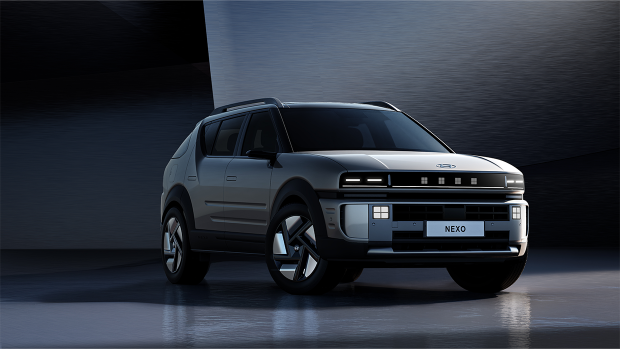Hyundai’s determination to explore hydrogen as an alternative fuel source is renewing its vigor in Australia with the approaching second-generation Hyundai Nexo hydrogen fuel cell electric vehicle (FCEV). This model, expected to arrive in the first half of 2026, intends to captivate the market with extensive upgrades in powertrain and design, which includes an aesthetic nod to classic American crossovers, reminiscent of the Pontiac Aztek.
Sporting a significant power upgrade from 135kW to 190kW, the new Nexo drastically reduces its 0-100km/h acceleration time to 7.8 seconds. This leap forward is crucial in attracting a segment of car enthusiasts seeking both sophistication and performance in hydrogen vehicles. Enhanced power electronics coupled with a bumped-up hydrogen capacity from 6.33kg to 6.69kg facilitate a driving range increase from 666km to over 700km (WLTP), providing a competitive edge over similarly-sized battery electric vehicles (BEVs), especially considering its rapid five-minute refueling capability.
Hyundai currently serves the Australian market with a fleet of 35 previous-generation Nexos leased primarily to government entities in Canberra and Queensland. This infrastructure is supported by nine operational hydrogen refueling stations across several key cities, including Sydney, Brisbane, and Melbourne, with eight more stations underway, indicating a marginal yet necessary growth in hydrogen infrastructure.
Despite Hyundai’s advancements and domestic market success in South Korea, where over 10,000 Nexos were sold in 2022 alone, questions persist about the viability of hydrogen FCEVs in Australia. The relatively sparse refueling network remains a bottleneck in the broader adoption of such technology. However, efforts by Hyundai Motor Company Australia (HMCA) to expand refueling capabilities and produce green hydrogen, notably through an upgraded refueler in Sydney capable of generating 20kg of hydrogen on a sunny day, showcase a commitment to overcoming infrastructural hurdles.
Internally, the Nexo raises the bar with luxury features such as high-end relaxation seats, a comprehensive infotainment system, and a refined interior aesthetic that aligns with its new “art of steel” design language. The introduction of digital side mirrors also plays a role in improving aerodynamics, further optimizing fuel efficiency.
While HMCA weighs the decision to lease or outright sell the new Nexo, the vehicle’s relevance in markets with more robust hydrogen infrastructure, such as South Korea, cannot be understated. Hyundai’s sustained efforts in developing hydrogen technology mark a noteworthy, albeit cautious, commitment to diversified sustainable mobility solutions.
With the global automotive landscape gradually warming to alternative fuel technologies, Hyundai’s Nexo stands as a forerunner in paving the way for hydrogen’s role alongside electric mobility solutions. The strategic focus on technological enhancements and infrastructure expansion indicates Hyundai’s dedication to remaining a key player in the evolving market of clean energy vehicles.
